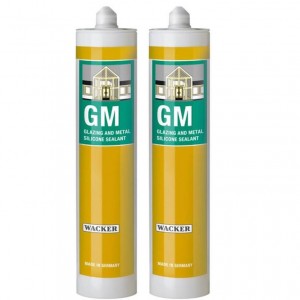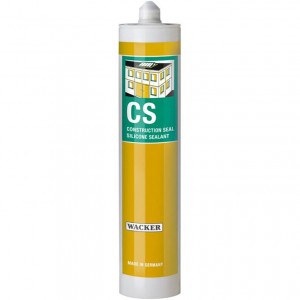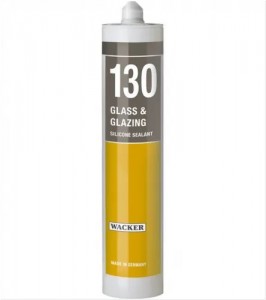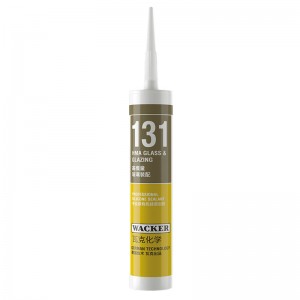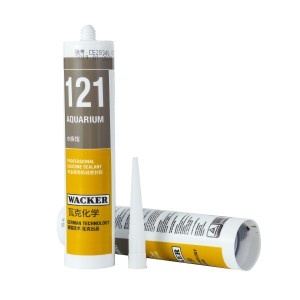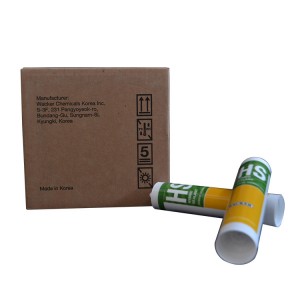WACKER® GM – GLAZING AND METAL SILICONE SEALANT
Features &Benefits
WACKER® GM - GLAZING AND METAL cures at room temperature under the action of atmospheric moisture to give a permanently flexible silicone rubber.
- non-sag
- ready gunnability at low (+ 5 °C) and high (+ 40 °C) temperatures
- flexible at low (-40 °C) and high temperatures (+120 °C)
- good weatherability
- low odor
- good tooling properties
- non-corrosive to metals
- suitable for alkaline substrates such as concrete, mortar, fibrous cement
Applications
-Exterior Applications
-Interior Applications
-Silicone Sealants WACKER Brand
If joints are too shallow for backing material to be employed, we recommend using a polyethylene tape (see Fig. 2). This acts as a release film (bond breaker), allowing the joint to move and the silicone to stretch freely.
Surface preparation WACKER® GM - GLAZING AND METAL should only be applied to surfaces which are clean, dry, free of all loose material, dirt, rust, or oil and other contaminants. Cleaning: Contaminated surfaces may be cleaned mechanically, if porous, or with a solvent if nonporous. Glass may be cleaned with water containing a surfactant or with a solvent. In the latter case, apply the solvent with a clean, oilfree, lintfree cloth. Remove residual solvent with a fresh, clean dry cloth before it evaporates. Caution: Always follow the recommendations and instructions provided by the solvent manufacturer. As solvents are usually flammable, keep them away from heat, naked flames or sparks. Ensure adequate ventilation. Do not inhale solvent fumes or allow solvent to remain in contact with the skin for prolonged periods. Primers: Ceramic tiles, enamels and glass do not usually require priming. To determine if priming is necessary, apply a bead of WACKER® GM - GLAZING AND METAL to the substrate and test its adhesion. Masking and Tooling: Masking tape affords a simple means of protecting critical areas beside joints from contact with the sealant. Do not allow the masking tape to touch the clean faces of the joint. Tool the sealant immediately after application and remove the tape before a skin forms.
WACKER® GM - GLAZING AND METAL is a sealant designed for low stress connection, expansion joints in the building industry and for low stress perimeter joints. It is especialy suitable for sealing and mending tasks in case of contact with metals, plastics or alkaline substrates. The sealant can be applied by either hand or machine to seal expansion joints and connecting joints in a wide variety of materials, such as glass, coated glass, ceramic tiles, enamel, painted surfaces (wood and others), aluminium, steel and many plastics. Restrictions on use WACKER® GM - GLAZING AND METAL must not be used as a secondary sealant in insulating glass units. WACKER® GM - GLAZING AND METAL must not be used for structural glazing bonding. It is the responsibility of the user to test the compatibility of the sealant with the adjoining materials. Incompatible substances like coating materials (paints, varnishes and glazes) or organic plasticizer containing rubbers (EPDM, butyl and neoprene) can lead to discoloration or other impairments like loss of adhesion of the sealant. Materials in direct contact with the applied sealant like cleaning agents and materials in indirect contact like gaseous emissions can damage the sealant in its function or change its appearance. Because of the multitude of these materials, Wacker cannot make a general statement to the compatibility of materials with the sealant. In case of doubt the user shall conduct appropriate preliminary tests. WACKER® GM - GLAZING AND METAL is not suitable for use on natural stones, such as marble, granite, quartzite, as it can cause staining. WACKER® GM - GLAZING AND METAL must not be used for sealing of aquaria. WACKER® GM - GLAZING AND METAL is not suitable for food contact applications. WACKER® GM - GLAZING AND METAL is not suitable for mirror mounting. The curing time can be extended at lower temperature, lower humidity or by low volume of air exchange. Adhesion WACKER® GM - GLAZING AND METAL exhibits good primerless adhesion to many non-porous siliceous materials, e.g. glass, tiles, ceramics, enamel, glazed tiles and clinker varnished or painted wood substrates such as concrete mortar and fibrous cement. Users must carry out their own tests due to the great variety of substances. The adhesion can be improved in many cases by pretreatment of the substrates with a primer. If adhesion difficulties arise please contact our technical service. Weather and heat resistance WACKER® GM - GLAZING AND METAL has excellent weatherability and is virtually unaffected by UV, radiation, ozone, rain, snow, sunlight, and extremes of temperature. Its mechanical and physical properties do not change appreciably on aging or exposure to weather. Even after many years in service, seals remain fully functional. Cured WACKER® GM - GLAZING AND METAL stays elastic at temperatures from as low as -40 °C to as high as +120 °C. It will even withstand brief exposure to lower and higher temperatures.
Technical data
Properties Uncured
|
Property
|
Condition
|
Value
|
Method
|
|---|---|---|---|
| Skin forming time | 23 °C | 50 % r.h | 35 min | - |
| Consistency[1] | - | non-sag | - |
| Curing rate | 23 °C | 50 % r.h | 2.0 mm/d | - |
| Extrusion rate - mass flow | 6 bar | 23 °C | 400 g/min | - |
These figures are only intended as a guide and should not be used in preparing specifications.
Properties Cured
|
Property
|
Condition
|
Value
|
Method
|
|---|---|---|---|
| Movement capability | - | 20 % | ISO 11600 |
| Modulus at 100 % elongation | 100.0 % | 0.37 N/mm² | - |
| Elongation at break | - | 250 % | ISO 8339 |
| Hardness Shore A | - | 24 | ISO 868 |
| Tear strength | - | 3.0 N/mm | ISO 34, method C |
| Tensile strength | - | 0.50 N/mm² | ISO 8339 |
These figures are only intended as a guide and should not be used in preparing specifications.
Packaging & Storage
Packaging
Storage


